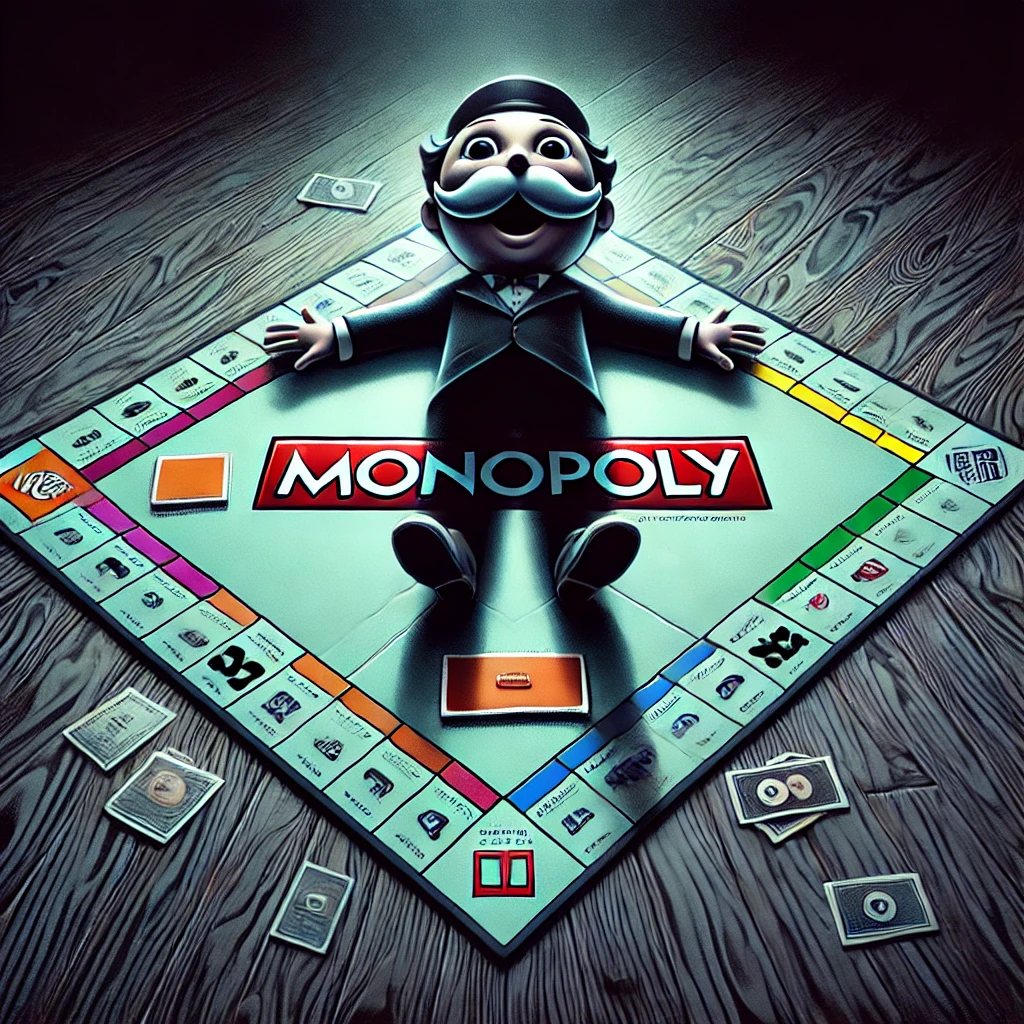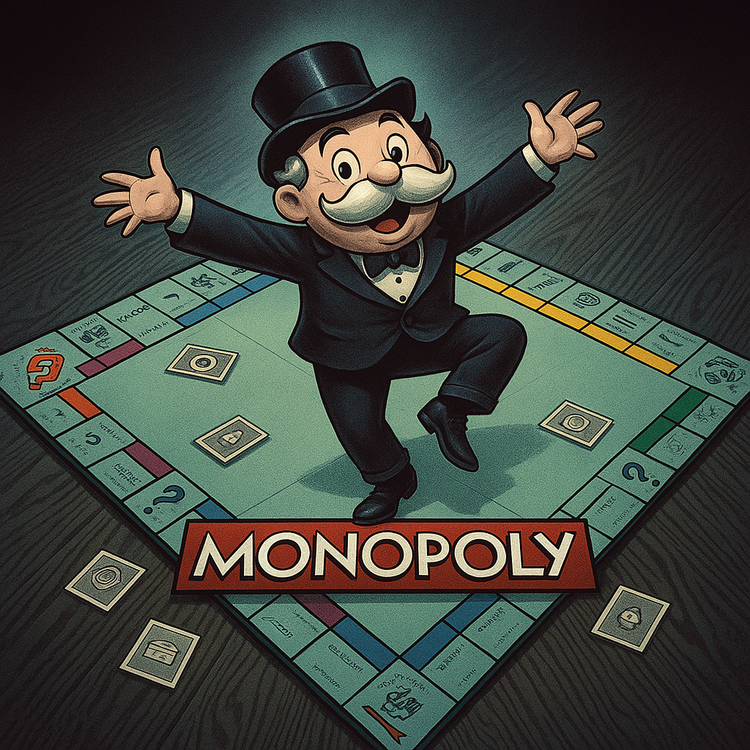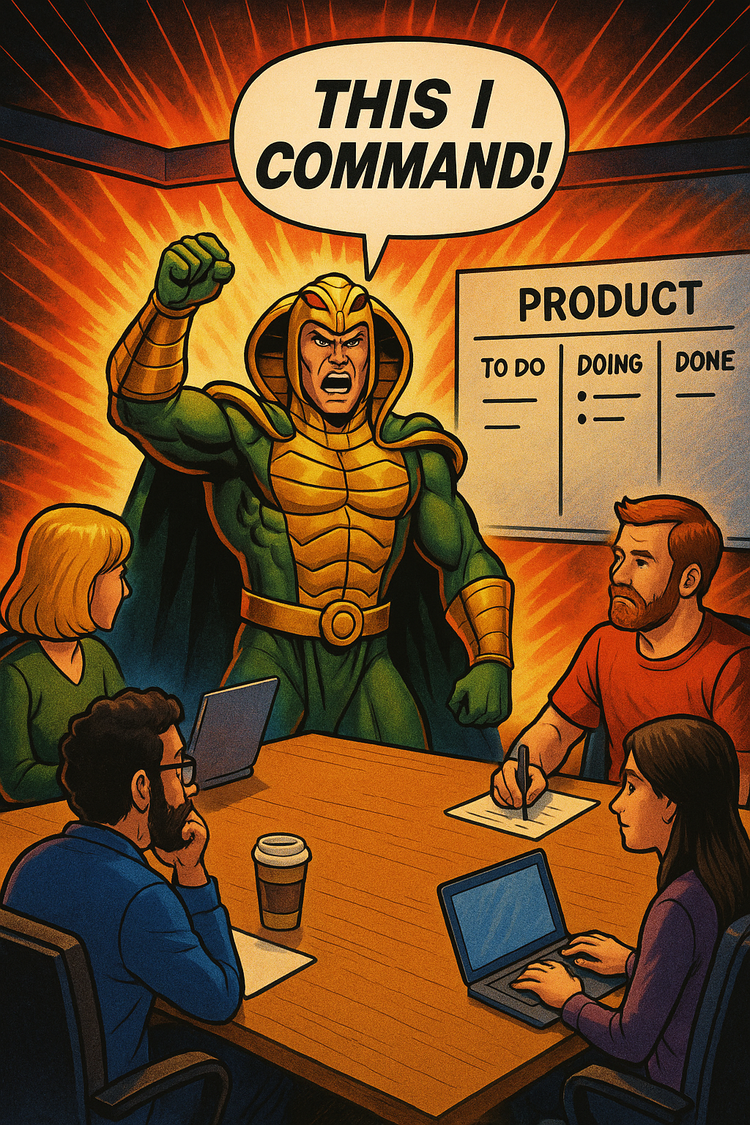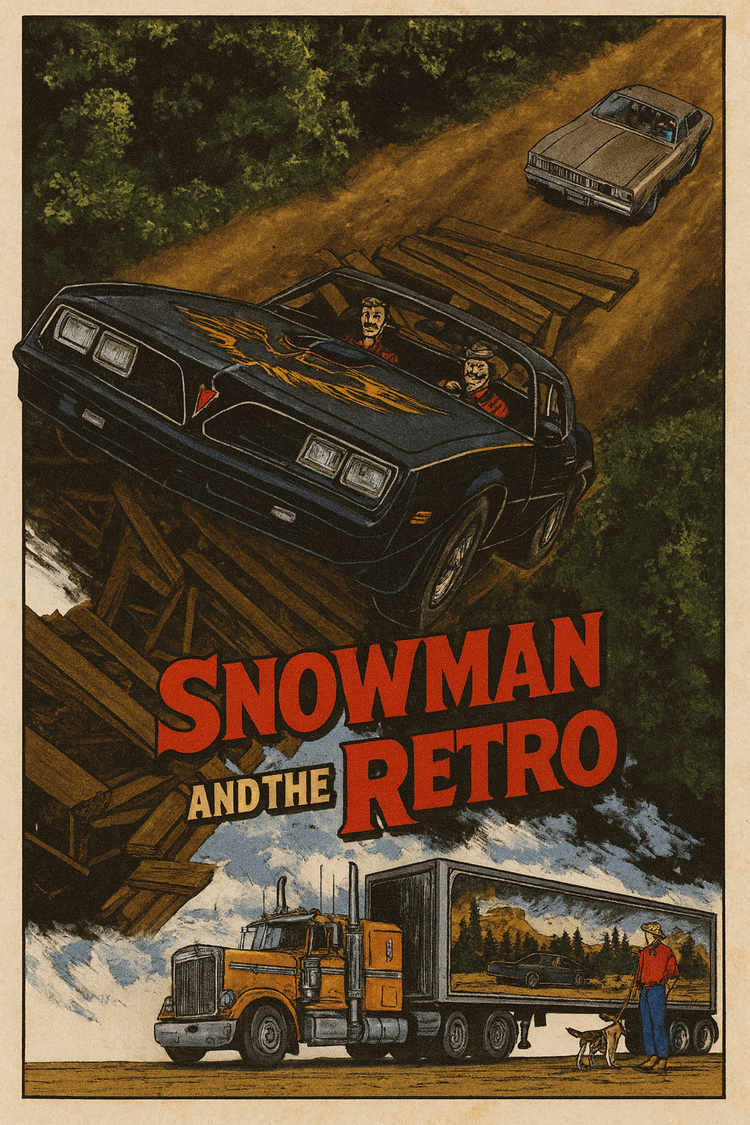What Monopoly (and Hugh Grant) Can Teach Us About Product Iteration

In Heretic, a 2024 psychological horror thriller, Hugh Grant plays a chilling villain named Mr. Reed—a twisted blend of the Riddler and Buffalo Bill. The film keeps you guessing, especially as two missionaries (played by Sophie Thatcher and Chloe East) are drawn into his mind games. In one scene, Mr. Reed launches into a philosophical monologue about the iterations of religion, using Monopoly as his metaphor.
When he uttered the word “iterations,” my ears perked up. Is Hugh a monomaniacal product guy?
Monopoly, after all, demonstrates how long-term iteration creates value. But its history goes even deeper than most people realize. While Parker Brothers officially published Monopoly in 1935, after purchasing the rights from Charles B. Darrow, the game’s origin story begins over 120 years ago, in 1904, with The Landlord’s Game. Created by Elizabeth Magie, it was designed to highlight the dangers of unchecked capitalism… a far cry from the game night staple we know today.
And yet, over the decades, this single idea has evolved, adapted, and stayed culturally relevant across generations. City editions, electronic banking, Fortnite Monopoly, even Monopoly for Millennials. The product has shifted to meet the moment.
So, the real product question is this… How do we know when a product has reached the end of its life? Or better yet… can we uncover new value by looking at the problems our products were originally trying to solve?
Let’s scroll back and examine the iterations, as told through the twisted brilliance of Mr. Reed.
Scrolling Back: Monopoly, Through the Eyes of a Dark Product Evangelist
In Heretic, there’s a scene that’s unsettling not because of what Mr. Reed does but because of how convincingly he speaks. In a room that looks like a study, he pulls out a Monopoly board and places it on a table like an artifact, he begins what sounds like a religious metaphor… but quickly reveals something far more terrifying.
He's not a preacher. He’s a product guy.
Let’s reimagine the scene with Mr. Reed as a dark product evangelist.
"You think this is just a game?" he asks the missionaries. "No… this is product strategy. Iteration. Survival."
And with that, he begins to walk through the game’s versions—not as symbols of faith, but as cold, calculated steps in a product lifecycle.
1. The Landlord’s Game – The Problem Definition Phase
He starts with a dusty, brown-edged board.
"This was never meant to entertain," he says. "It was a thesis. A problem statement. A prototype with a message."
Elizabeth Magie’s Landlord’s Game wasn’t built to scale. It was built to teach. But even then, it carried the DNA of Monopoly—property, rent, and power dynamics. It was the minimum viable product, a focused experiment to test a social hypothesis.
2. Classic Monopoly (1935) – The Product-Market Fit
Now he sets the 1935 version on the table.
"They took the idea, stripped out the morals, and found the hook: empire-building during the Great Depression."
Charles Darrow didn’t invent Monopoly, he repackaged it. Standardized it. Branded it. And most importantly, sold it. This was when the product hit its stride. The fantasy of ownership… in an era of economic scarcity. It was never just a game, it was escapism.
3. Monopoly Ultimate Banking – The UX Overhaul
Next, he flicks on the lights and swipes a card through a digital reader.
"Cash is slow. Tactile. Obsolete. We modernized the transaction layer without touching the core mechanic."
Ultimate Banking didn’t rewrite Monopoly. It re-skinned the interface. By replacing paper money with contactless cards, it mirrored how users were already behaving in real life. The rules didn’t change—but the user experience caught up with the culture.
4. Monopoly “Zany Regional Spin-off Edition” – The Emotional Pivot
Finally, he holds up the Bob Ross box, the smiling painter, a surreal contrast to the cold tension in the room.
"When your product has saturated every market," he murmurs, "you don’t sell function. You sell feeling."
No new mechanics. No innovation. Just emotional branding layered on top of a familiar engine. It’s less about Monopoly, more about vibe. A soft blanket over a game about domination. Mr. Reed smiles as he says:
"We don’t even need to change the game anymore… just how you feel about it."
Then suddenly—he whips out a tablet.
"And don’t forget... Monopoly Go!!!"
He taps the screen, and the room lights up with animations, reward wheels, coin showers, and a leaderboard that resets every hour. The missionaries flinch.
"Fast. Addictive. Mobile-native," he says, eyes locked on the screen. "Real-time engagement. Behavioral hooks. Welcome to the final form."
There’s a beat of silence.
They glance at each other, confused, uneasy, as if silently asking the same question:
Is Mr. Reed about to launch into a diatribe about Clue?
He doesn’t. At least… not yet.
Applying the Product Life Cycle to Monopoly
If Mr. Reed showed us anything, it’s that Monopoly didn’t survive by accident. It endured because the teams behind it understood something essential: every product goes through a life cycle, and the only way to extend it is through iterations that bring value to the consumer.
Let’s break it down through a product lens:
Development (Ideation/Concept): The Landlord’s Game
- Purpose-driven prototype
- Minimum Viable Product built to teach, not scale
Introduction (Launch/Market Entry): Classic Monopoly
- Rebranded and positioned as escapist fantasy
- Achieved product-market fit during the Great Depression
Growth (Market Expansion): Themed & International Editions
- Scaled through localization and licensing
- Retained core mechanics while expanding emotional relevance
Maturity (Optimization/Saturation): Electronic Banking & Bob Ross
- UX updated for modern behaviors
- Emotional branding layered onto legacy mechanics
Extension/Renewal: Monopoly Go!
- Platform-native redesign
- Built for engagement, monetization, and mobile-first habits
Key Takeaway
Every iteration should respond to a shift in user behavior or need.
Whether that shift is emotional, functional, or platform driven, successful products meet their users where they are, not where they were.
Conclusion: The Long Game of Product Thinking
Monopoly isn’t just a board game. It’s a living case study in product lifecycle management, a 120-year journey of iteration, reinvention, and relevance.
What Mr. Reed captured in Heretic, perhaps unintentionally, is that every product tells a story. And the ones that last? They don’t just change for the sake of novelty. They adapt to the world around them. They evolve because people evolve.
As product leaders, we’re not in the business of chasing trends, we’re in the business of delivering value. That means listening to our users, watching for shifts in behavior, and asking hard questions about what still serves… and what needs to change.
The Monopoly team didn’t hold onto nostalgia. They held onto the core experience that mattered, then reimagined everything else, theme, format, platform, emotion, to keep that experience alive for each new generation.
Identify Your Core Value Proposition:
Strip your product down to its essence. What’s your version of Monopoly’s property-trading mechanic that needs to remain untouched, even as everything else evolves?
Question Your Assumptions:
Ask yourself: If we were launching this product today, what would we do differently? Then consider what’s stopping you from making those changes.
Your product doesn’t need to be timeless. But your ability to listen, learn, and iterate? That’s how you build something that lasts.
And if Mr. Reed ever does go on a rant about Clue, I’m betting it ends like this:
“It was Colonel Mustard, on Boardwalk, with the Community Chest.”




